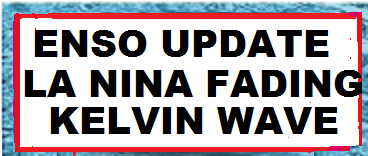NOAA Updates their Outlook for May, 2022 – It is an improvement
At the end of every month, NOAA updates their Early Outlook for the following month which in this case is May. They also issue a drought outlook for the following month. We are reporting on that tonight. The updated Outlook is quite different from the Early Outlook which NOAA now calls the Mid-Month Outlook. It is overall less warm and less dry than the Mid-Month Outlook.
We provide partial-month outlooks for the first 27 days of May which allows us to validate if the Monthly Outlook is consistent with the partial month forecasts and it is. We also provide enough information for readers to understand any changes from the Mid-Month Outlook and we try to figure out why these changes were made. Most of the changes are explained in the NOAA discussion which is included in the article. The NOAA discussion describes the changes but does not provide a lot of insight into the reasons for the changes other than a change in the wave pattern that they describe as more troughing in the western Northern Tier. The partial-month forecasts that we have provided show how NOAA thinks this will play out as the weather pattern changes during May.
There is also a short discussion of the ENSO condition and it is looking less likely that there will be a Three-peat of the La Nina but that a near La Nina may be the more likely situation for Fall and Winter. Those forecasts can change but it looks like a marginally better situation with the focus on the words marginally better.



